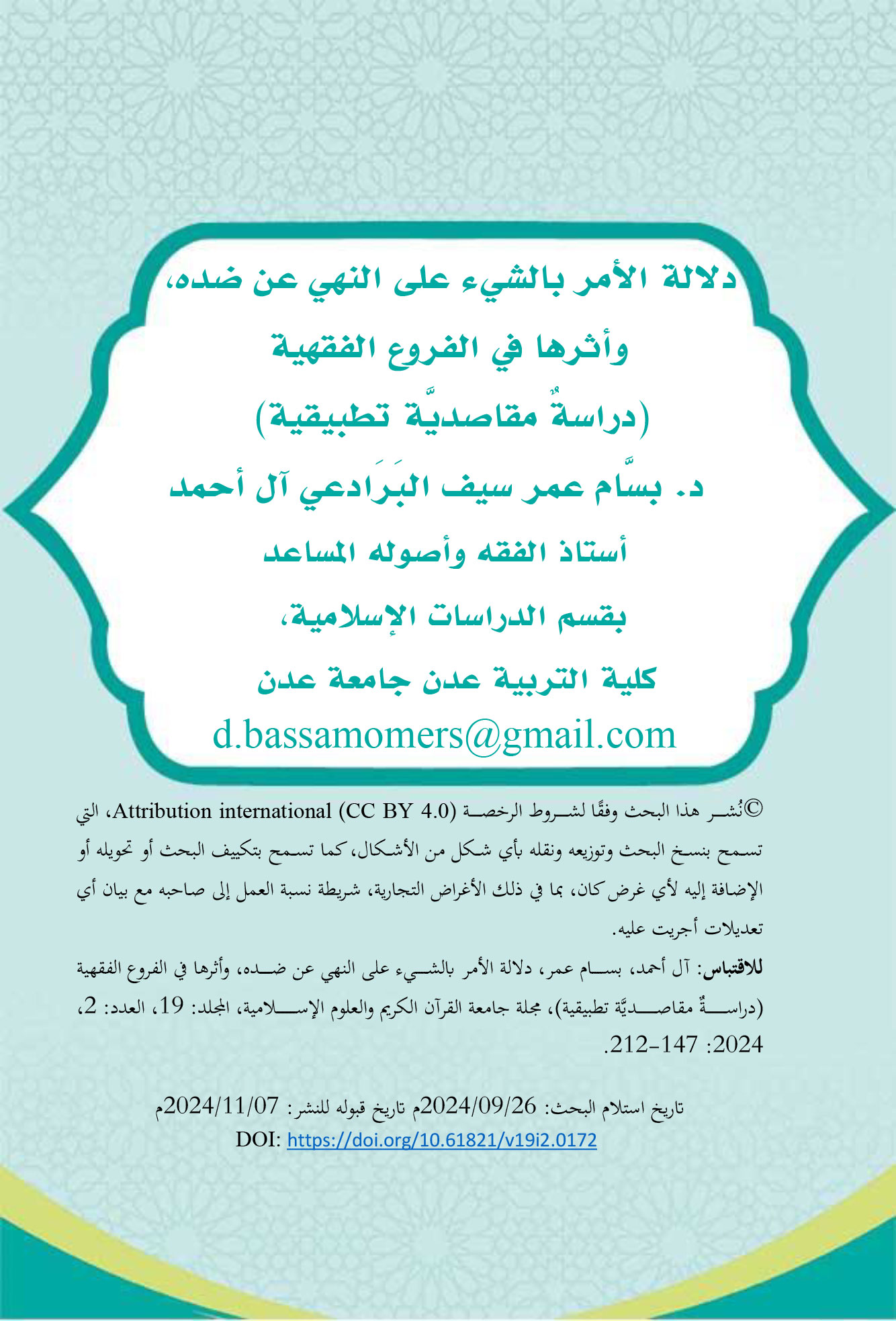The significance of the command to do something as a prohibition of its opposite, and its effect on the branches of jurisprudence (an applied study of objectives)
DOI:
https://doi.org/10.61821/v19i2.0172Abstract
This research deals with the subject of the significance of the command to do something on the prohibition of its opposite and its opposites, and its impact on the branches of jurisprudence, through an applied purposeful study. The research aimed to clarify the subject of the dispute in the significance of the command to prohibit its opposite, and to clarify the statements of the fundamentalists on that, and to clarify the impact of this disagreement on the course of the ruling on the branches of jurisprudence, relying on the inductive, comparative and applied approach. At the end of this study, I concluded that the Lawgiver intends to comply with the necessary prohibition from the command, a secondary intention subordinate to the original intention to comply with the command, and the aim of it is to confirm the command and protect it from being missed, and that the difference in the rank of the Lawgiver's intention in the implicit prohibition and command does not mean degrading the rank of the first's sanctity and the second's obligation, but rather they come in agreement with them in degree, and the disagreement of the fundamentalists has had an impact on changing the course of the ruling in the branches of jurisprudence.
Downloads

Downloads
Published
Issue
Section
License
Copyright (c) 2024 Journal of the University of Holy Quran and Islamic Sciences

This work is licensed under a Creative Commons Attribution 4.0 International License.
©This article is an open access article distributed under the terms and conditions of the Creative Commons Attribution (CC BY) license












